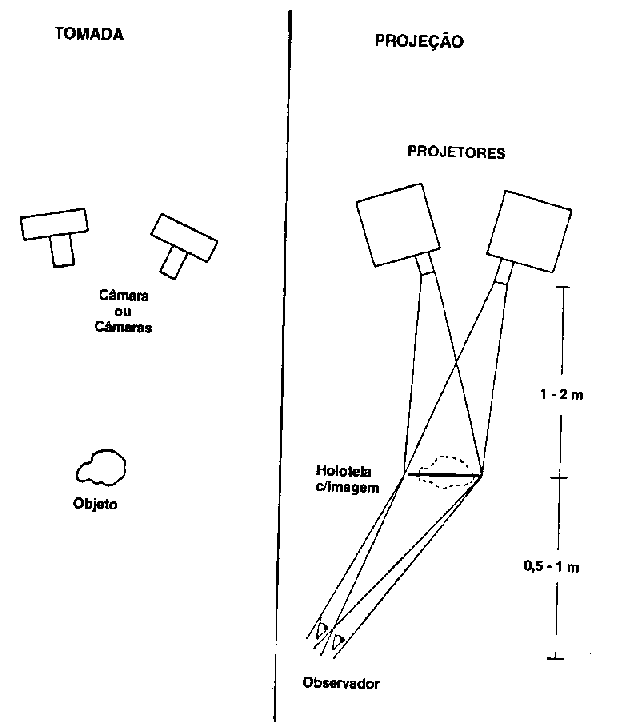
We must remember the way to project an stereo pair on a hologrpahic screen to be seen without googles, being photographs or TV images:

One can see two views, but there is no continuous parallax.
Let's see now the simple projection of an object, to be compared with
the previous case:
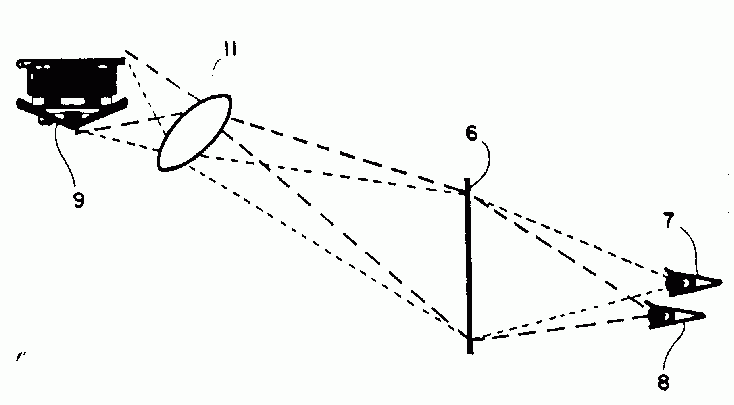
Dividing theoretically in vertical strips the projecting lens, it is
clear that any two strips can act like each projector of the previous case.
But, as the strips ensemble is a continuous, we get the projection of continuous
parallax.
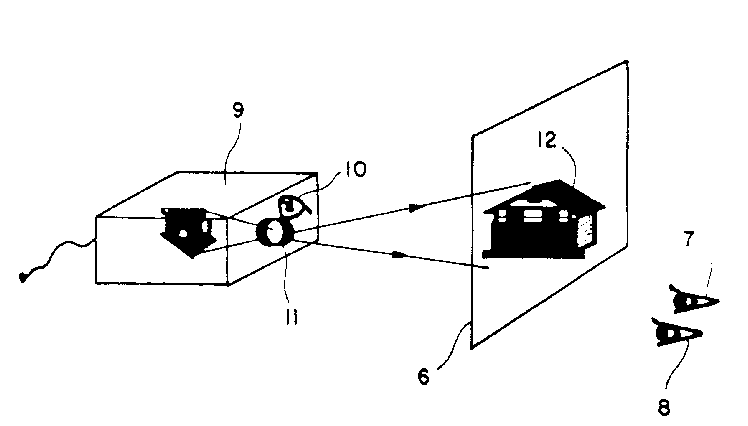
This is how the apparatous is, rendering the final image (12) on the
holographic screen (6) of the object, illuminated by the white light lamp
(10).
How is the screen made? Jesus, you wanto to know everything!. Well, it needs more than basic optics, but if you know holography maybe you can understand the following construction scheme:
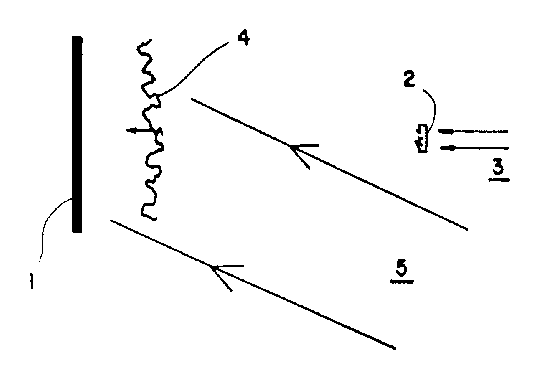
But you should need to read some of my technical articles to know better (see http://geocities.com/doctorlunazzi)
I explain there that the diffractive screen is, in a first rough analysis, a diffractive lens (HL) with different focus for each wavelength:
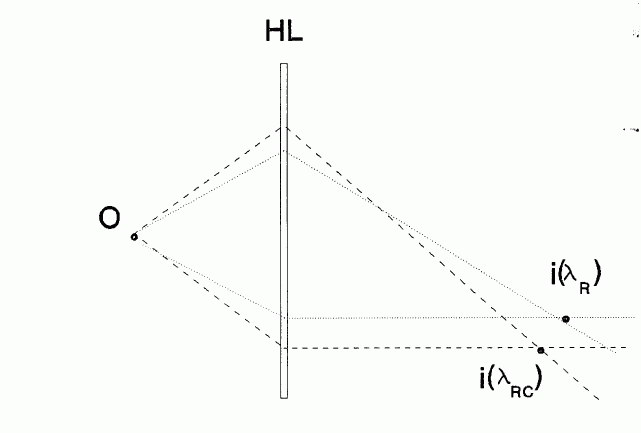
Why employing a diffactive lens instead of a refractive one? Well,
a big refractive lens (objective) is very heavy and expensive. But
there are the plastic Fresnel lens which are so light as a diffractive
screen. But the problem is that it is not possible to have enough visual
field to get both eyes receiving images at the same time.
The visual result you can see from the pictures I get illuminating an object by means of an episcope (book projector for classroom) using an objective of 22,8 cm focal length and 4,5 numerical aperture.
Projecting on a Fresnel lens we have:
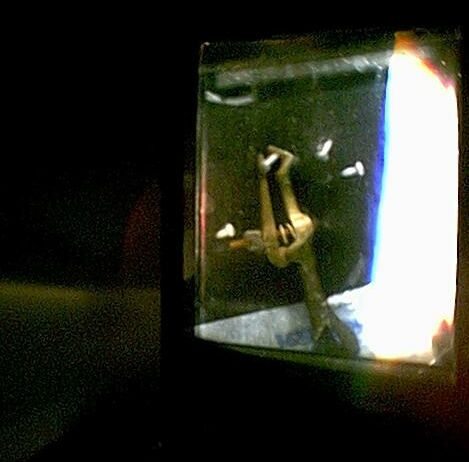
Left view |
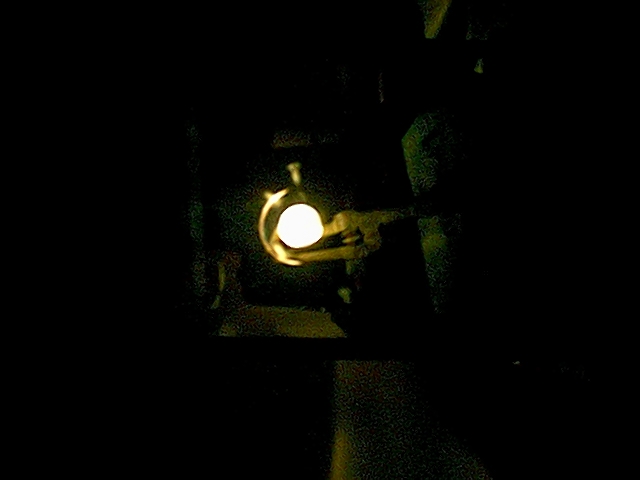
Right view |
Projecting on a diffractive screen we have:
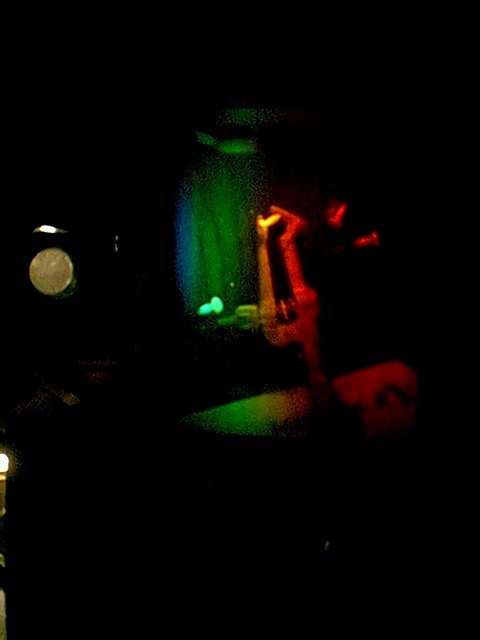 |
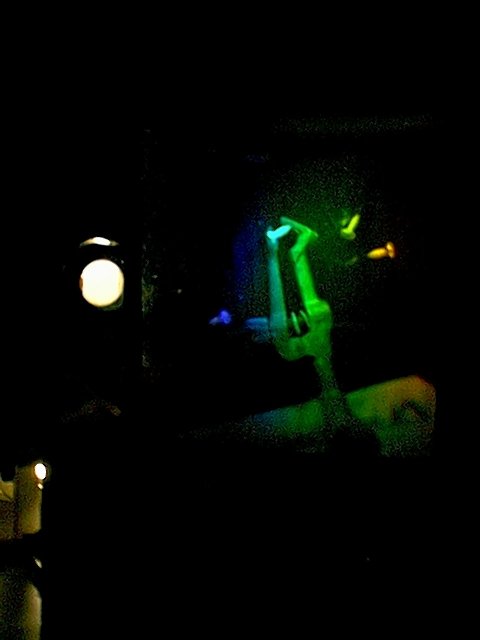 |
The screen is 15 cm wide and 30 cm high, stays at 40 cm
from the objective and the observer is at 45 cm from it.
The left view is reddish because to reach the left eye position the
diffracting angle must be larger than for the right view.
We get an image with horizontal parallax, three-dimensional to observe
without googles,with some remaining of the original color and less sharpness
when image points appear further to the screen plane.
Patent "Procédé et dispositif pour projeter et observer
des images differenciees ou stereoscopiques,
dessins, photographies, films cinematographiques ou video", INPI-FR,
No 8907241, 1992.
Patent "Processo para projeção de imagens com paralaxe
horizontal sobre tela holográfica", INPI, No
9302553-0, solicitaed 1993, granted october 2000.
Places where the holoprojector was publique exhibited with an explaining conference:
- Optics workshop at the International Center of Theoretical Phyisics-ICTP,
Trieste-Itália-1990
- Midia Park-Koln-Germany 1990
- Center for Images Science-RIT Rochester-EUA-1990
- III Semana de Ingenieria em Sistemas Computacionales- Universidad
Iteso-Guadalajara-Jal. México 1992
- Centro de Investigaciones Ópticas-CIO, León-México-1990
- Institut d'Optique, Orsay-France, 1993
- Universidad Nacional de Buenos Aires- Dpto. de Física- Buenos
Aires-RA-1994
- Universidad Nacional de La Plata- Facultad de Bellas Artes - La Plata-RA-1994
Private demonstrations:
- Dr. S. Benton - Midia Lab-MIT Boston-EUA 1990.
- A representative designed by KODAK , Rochester- USA-1990.
- A representative designed by XEROX, Rochester- USA-1990.
- Dr. E. Leith (Michigan-EUA) Campinas-BR-1990.
- Dr. O.D.D. Soares (Fac.de C.Físicas, Univ. de Porto-PT) 1991.
- Dr. P.M. Boone and Dr. V. Markov - Gent-BE-1993.
- Dr. R. Lessard (Univ. Laval, Quebec-CA) Campinas-SP-1996
- Dr. Y.N. Denisyuk (S. Petersburgo-RU) Campinas-SP-BR 1998.
Places where the holoprojector was exhibited to the public:
- Semana de Arte da UNICAMP, Campinas-SP-BR 1989.
- Museu Dinâmico de Ciências de Campinas-Campinas-SP-BR
1989.
- Exposição dentro da Semana de Fotografia de Curitiba,
Teatro do Paiol-Curitiba-PN-1990.
- 16th Congress of the International Commission for Optics-ICO 16,
Budapest, Hungary, 1993.
- 17th Gral. Meeting of the International Commission for Optics, Taejeon,
Korea, 1996.
- International Conference on Holography and Optical Image Processing,
Nanjing, China, 1996.
- Regular Meeting of the Holographic Display Artists and Engineering
Club- HODIC, Nihon University, Japan, 1996.
- In many opportunities when schools visited Campinas State University-UNICAMP-Campinas-SP-BR
and at science fairs in schools of the São Paulo State, years 1987-2000.